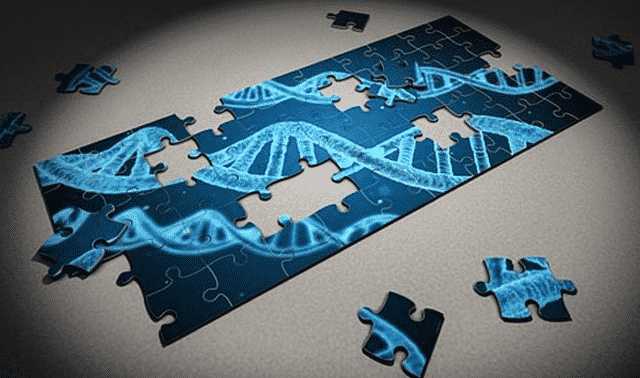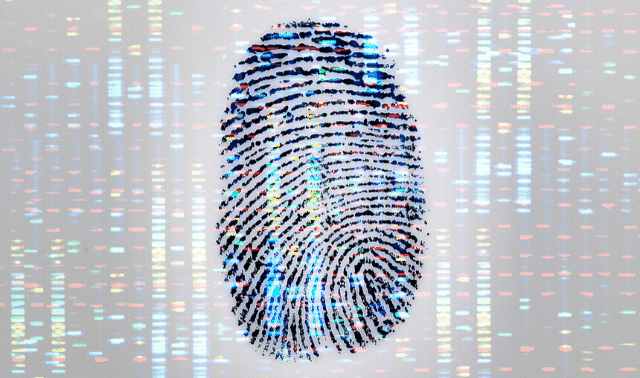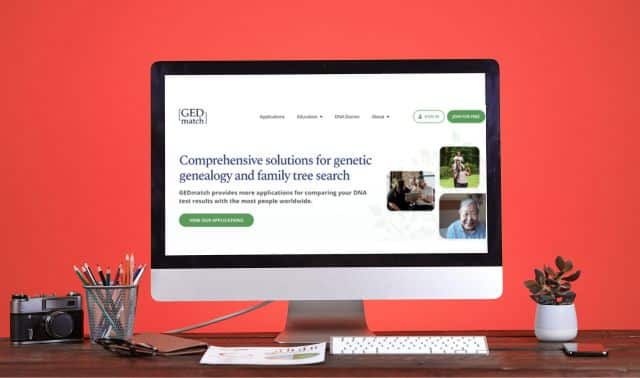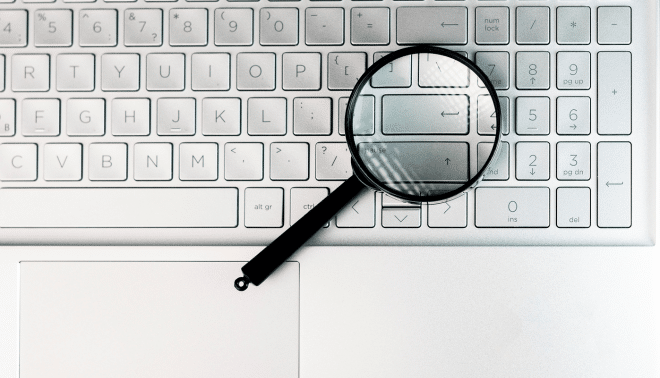Sign up for the Family Tree Newsletter! Plus, you’ll receive our 10 Essential Genealogy Research Forms PDF as a special thank you.
Get Your Free Genealogy Forms
"*" indicates required fields

Note: This is a developing story. We will continue to update this article as new information becomes available.
Major genetic genealogy company 23andMe made headlines in March 2025 when it filed for Chapter 11 bankruptcy. The move comes after years of financial difficulties, data breaches, and corporate upheaval. The situation is ongoing, but (as of this writing) 23andMe seeks a new owner through bankruptcy court proceedings. Suitors include Regeneron Pharmaceuticals (a biotech company) and the TTAM Research Institute (backed by 23andMe’s founder and former CEO).
While many in the genealogy community have used 23andMe for DNA testing, its primary business has always been health data and genetic research–not family history. Genealogists might understandably be considered about happens to their data now, and what does Chapter 11 entails. What should genealogists who’ve tested with 23andMe expect next?
At Family Tree Magazine, we’ve actually been through this before. We were once published by F+W Media, which filed for Chapter 11 in 2019. As part of that process, we were sold to our current publisher, Yankee Publishing.
From that experience, we’ve learned a few things—and we’re here to help make sense of what comes next.
What is Going on at 23andMe?
On June 30, 23andMe announced that it received approval from the bankruptcy court for the sale of “substantially all of the Company’s assets and ongoing business operations” to TTAM Research Institute, a nonprofit corporation led by 23andMe’s co-founder and former CEO Anne Wojiciki. The transaction is expected to close in the coming weeks. TTAM will acquire all of the assets of 23andMe, including the Personal Genome Service and Research Services, and the Lemonaid Health subsidiary, for $305 million.
How did we get here?
On March 23, 23andMe, one of the world’s largest consumer genetic testing companies, announced it had filed for Chapter 11 bankruptcy. The company stated it would continue operating during the restructuring process and had received court approval to pay employees and maintain regular operations. At the same time, CEO and co-founder Anne Wojcicki stepped down, signaling her interest in potentially buying the company.
Soon after the filing, on March 26, 23andMe received approval from the bankruptcy court for its initial Chapter 11 motions and began preparing to sell all of its assets. It also received court approval to launch a formal bidding process. As part of that process, the court required all potential buyers to honor the company’s existing privacy policies and data protections. With help from its investment banker, 23andMe began soliciting bids over a 45-day period.
On May 19, 23andMe announced that it had reached a definitive agreement to be acquired by Regeneron Pharmaceuticals, a US-based biotech firm. The deal was expected to close by summer or fall pending court approval and excluded 23andMe’s Lemonaid Health subsidiary, which the company plans to wind down. Regeneron agreed to comply with privacy protections and applicable laws governing users’ genetic data.
However, the sale process soon became more complicated. On June 4, 23andMe received a higher offer of $305 million from TTAM Research Institute, a nonprofit founded by Anne Wojcicki, which surpassed Regeneron’s earlier $256 million offer. This prompted the company to reopen the bidding process. Regeneron responded by stating it would submit a new bid, but only if awarded a $10 million breakup fee should Wojcicki’s offer prevail. Their attorney, Emil Kleinhaus, argued it was unfair for 23andMe to seek a “do-over” after the initial auction process.
Adding to the scrutiny, a court-appointed Consumer Privacy Ombudsman is reviewing the potential impact of the sale on users’ data and will present findings to the court ahead of the upcoming Sale Hearing, scheduled for June 17.
Meanwhile, the District of Columbia and 27 states filed a lawsuit on June 9 against 23andMe, aiming to block the company from transferring customer genetic data without explicit consent. The following day, on June 10, the United States House Committee on Oversight and Government Reform opened a hearing on privacy and national security concerns surrounding the 23andMe bankruptcy sale.
Internally, 23andMe is also bracing for potential major layoffs. It filed a WARN notice with the state of California indicating that as many as 233 employees, including upper management, could be let go, further emphasizing the scale of the company’s reorganization.
What Happens to My 23andMe DNA Data?
One major concern of 23andMe’s filing is, of course, data security, as the company has information on genetic data for millions of users. The company has made headlines before on the subject, suffering a large data breach in 2023 that affected nearly 7 million people–about half its customers.
The following year, all seven of 23andMe’s independent directors resigned from the board because they were unsatisfied with the CEO’s plan to privatize the company.
Chapter 11 bankruptcy means that the company is still functioning “as usual”: in 23andMe’s case, processing the DNA kits, maintaining their website, and protecting users’ data. According to 23andMe, users’ access is unchanged, and customers will continue to have full access to their accounts, genetic reports and any stored data.
The bankruptcy court’s approval of 23andMe’s initial Chapter 11 motions on March 26 allows the company to continue to pay its employees and maintain current operations. The court also authorized the company to begin a process to sell all of its assets and approved bidding procedures for this process. It requires all potential buyers to honor 23andMe’s existing consumer privacy policies and data protections.
On Monday, June 9, the District of Columbia and 27 states filed a lawsuit against 23andMe, aiming to block the company from transferring customer genetic data without explicit consent. The following day, on June 10, the United States House Committee on Oversight and Government Reform opened a hearing on privacy and national security concerns surrounding the 23andMe bankruptcy sale.
How Do I Delete my DNA Data (and Should I)?
The announcement has understandably sparked concern and in some cases alarmist reactions from 23andMe users and press, with the Washington Post unequivocally encouraging readers to delete data.
Some lawmakers have also expressed concerns. Over the weekend, California Attorney General Bob Bonta issued a consumer alert to Californian customers of 23andMe: “Given 23andMe’s reported financial distress, I remind Californians to consider invoking their rights and directing 23andMe to delete their data and destroy any samples of genetic material held by the company.”
While it is wise to stay informed and take precautions, it is ultimately up to users themselves to make their own decisions regarding deleting their genetic data from 23andMe’s database.
Diahan Southard, DNA expert, a Family Tree Magazine columnist, and author of Your DNA Guide, points out that users have three primary reasons to keep data at 23andMe:
- Using the company as a “bank” for your DNA sample
- Connecting with test takers whose DNA isn’t anywhere else, especially since 23andMe users aren’t necessarily genealogists
- Taking a “wait-and-see” approach while the bankruptcy plays out—and who (if anyone) ends up owning the company
“Filing for bankruptcy often signals a company’s desire to stay in business,” says Southard. “They are taking the opportunity to restructure. If it turns out they are sold to a company that you are uncomfortable with having your DNA sample, the data-privacy protection laws ensure that you will have an opportunity to delete it at that time.”
In “An Open Letter to 23andMe Customers,” published on 23andMe’s blog on March 23, the company states, “The Chapter 11 filing does not change how we store, manage, or protect customer data.” It continues to detail that the company remains committed to its users’ privacy and “any buyer of 23andMe will be required to comply with applicable law with respect to the treatment of customer data.”
How to download your genetic data:
Regardless of what you choose, experts recommend downloading your raw DNA data—especially if you plan to ask the company to delete it. Users of 23andMe can transfer their data to another platform or preserve for personal storage by following these steps:
- Log into your 23andMe account on the website
- Go to https://you.23andme.com/user/
- Scroll to the “23andMe Data” section at the bottom of the page
- Download your data
Southard has a tutorial for downloading raw 23andMe data on her website.
How to delete genetic data/test kit:
- Log into your 23andMe account on the website
- Go to https://you.23andme.com/user/
- Scroll to the “23andMe Data” section at the bottom of the page
- Scroll to “Delete Data”
- Click “Permanently Delete Data”
- Don’t forget: Confirm your request—you will receive an email from 23andMe and must follow the link in the email to confirm your request
How to destroy your 23andMe test sample:
Deleting your physical DNA sample is different from deleting the genetic data in 23andMe’s database if you previously opted to have your saliva sample and DNA stored by 23andMe. To change that preference, you can do that from your account settings page under “Preferences.”
How to revoke permission for your genetic data to be used in research:
If you previously consented to 23andMe and third-party researchers to use your genetic data in research, you can revoke your consent in your account settings under “Research and Product Consents.”
Note that this will only prevent your data from being used in future research. Your data (which has been anonymized—that is, disassociated with your name and other identifying information) will remain in any research studies that have already taken place.
What Made 23andMe Unique Among Testing Companies?
While 23andMe is one of the largest genetic testing companies in the world, the company itself is not a genealogy company. It was never about family history–it is a health company. On its “Our Story” webpage, 23andMe states “We are a mission-driven company with big dreams of using data to revolutionize health, wellness, and research.” Genealogy features added to the platform are used as a way to grow their DNA database while also generating revenue for the company.
However, as 23andMe’s DNA database expanded, it became an unexpected goldmine for genealogists. While family history wasn’t the company’s primary focus, its growing pool of matches and DNA tools proved invaluable for uncovering hidden connections and breaking through research brick walls.
Our Advice
At a minimum, download your raw data and keep records of all key matches you have. Many users will likely pull their tests from 23andMe in the coming weeks, so DNA matches will disappear from your match list.
23andMe doesn’t have a built- in feature to download your match list. You can manually copy and paste this information, but that will take a long time. Genealogy Explained created a tool to convert your 23andMe matches from JSON to CSV, which is available for free here.
Related Reads
A version of this article was posted online in March 2025. Last updated: July 1, 2025









